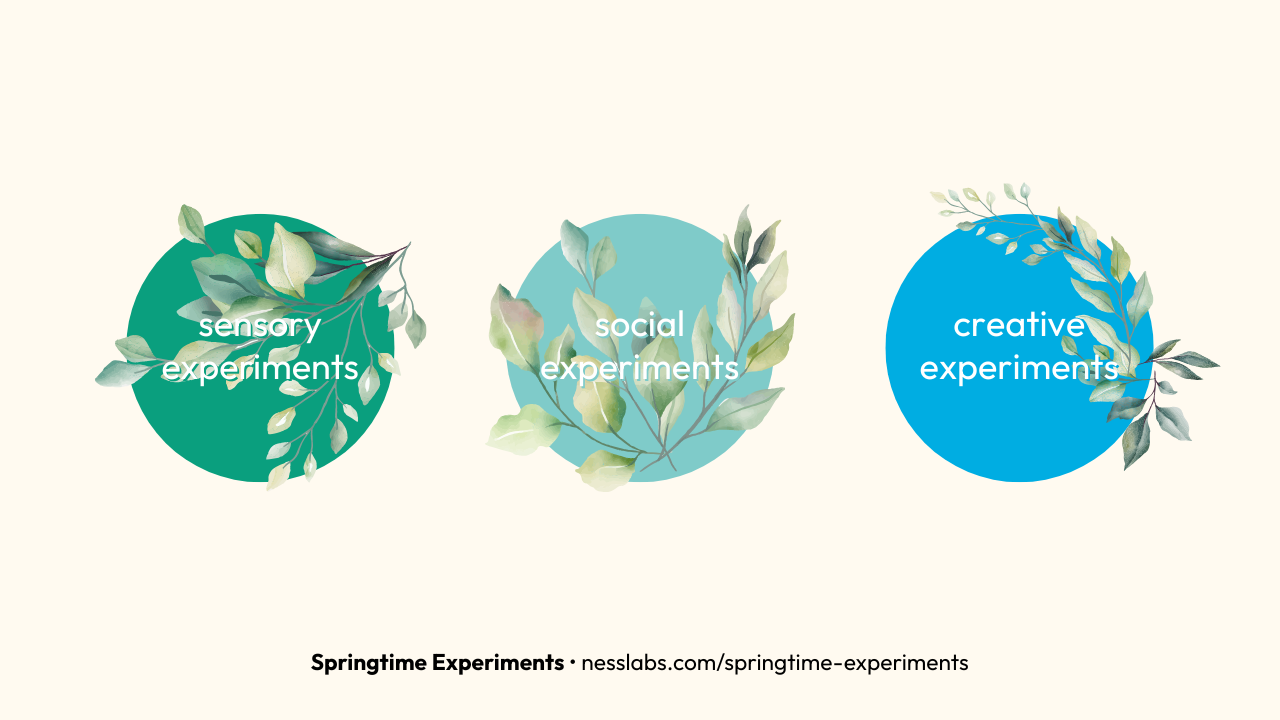Humans have co-evolved with environmental changes. Our ancestors synchronized their activities with seasonal cycles – planting, harvesting, and conserving resources according to the season – and our bodies developed physiological responses to these seasonal shifts that persist today.
Around 60% of the global population experiences a distinct spring season each year. The Celtic festival of Beltane, the Hindu celebration of Holi, and the Japanese Hanami traditions all acknowledge the importance of this transitional period.
However, because of modern conveniences and climate-controlled environments, we’ve largely forgotten our connection to these natural rhythms. A simple way to reconnect with this ancestral knowledge and make the most of spring is by conducting springtime experiments.

Spring’s Effect on Human Psychology
From an evolutionary perspective, humans developed behavioral adaptations to seasonal changes to optimize survival. Different strategies for acquiring and preserving resources were necessary throughout the year, which progressively became encoded in our physiology.
For early human societies, spring brought increased food availability and social interaction opportunities. This likely selected for heightened exploration during spring months – a way to maximize resource acquisition during this crucial period.
Increased daylight exposure during spring also reduces melatonin production while increasing serotonin levels. These neurochemical shifts correlate with changes in cognitive function, mood, and energy.
And moderate warming might slightly improve performance on tasks requiring cognitive flexibility – which means that springtime temperatures might also help us better “think on our feet”!
Although the research primarily reflects the northern hemisphere experience, the same principles apply during September to November for people living in the southern hemisphere, and tropical regions experience transitions between dry and wet seasons that also trigger increased biological activity.
So, overall, research suggests that transition periods between seasons provide opportunities for behavioral adaptation across cultures and climates. Which means anyone can leverage these shifts to explore new behaviors, new skills, new places, and even new relationships.
Springtime Experiments for Personal Growth
Spring offers an ideal period for personal experimentation. Rather than implementing permanent changes, consider trying new things and seeing what works and what doesn’t, framing your personal growth as a series of springtime experiments using these questions as a starting point:
1) “How might I expand my social circle?” Research suggests that shared activities create effective foundations for new connections. Join community-based outdoor activities where interactions occur naturally. Test “social diversification” by introducing different social groups to each other. Experiment with different ice breakers when meeting new people.
2) “How might I engage with my environment differently?” Implement systematic curiosity by noticing one natural element daily – maybe it’s a flower, a tree, a woorden bench you’ve never noticed. Change your indoor environment with elements that connect to seasonal changes, maybe through plants or natural light. Visit new places: parks, museums, or new neighbourhoods. Go to your local market and make food using seasonally available ingredients.
3) “How might I reimagine my routines?” This applies to both your routine behaviors and thought patterns. Study new topics outside your established expertise or work. Practice metacognition by observing your thoughts and emotions. Try that productivity method you’ve been curious about to explore new ways of managing your time and energy, perhaps by better aligning your workflows with your chronotype.
4) “How might I incorporate more sensory experiences into my daily life?” Try going barefoot to test the effects of direct contact with natural surfaces such as grass and soil (I’ve seen this referred to as “earthing”). See how it feels to wear natural fabrics. Make your own candles. Experiment with getting a massage every week. Or massage yourself with different oils and take notes of the massage protocols that seem to help.
5) “How might I experiment with my creative expression?” As a liminal moment of renewal, springtime is great for creativity. Experiment with dancing, painting, drawing, singing, writing. Produce some form of easy creative work each day. Take inspiration from nature by incorporating natural patterns and principles into your creative project.
Consider running some of these experiments with others, and make sure to reflect on the results using the Plus Minus Next template. What worked? What didn’t? What might you want to focus on next? This is what we’ll allow you to create growth loops, where each experimental cycle provides lessons for the next one.
Examples of Springtime Experiments
If you’re looking for some inspiration, here’s a short list of tiny experiments that can be particularly interesting to conduct during the spring:
- I will [visit one new park] every Sunday for [4 weeks]
- I will [take one photo] everyday for [three months]
- I will [read outside for 20 minutes] each day for [20 days]
- I will [make myself a salad for lunch] every day [one week]
- I will [massage my legs] every morning for [one month]
- I will [take a walk in the neighborhood] every evening for [2 weeks]
- I will [try a new tea] every week for [6 weeks]
- I will [send a handwritten note] to someone each week for [1 month]
- I will [stretch every morning] for [10 days]
- I will [write down one observation about nature] daily for [3 weeks]
- I will [have a phone-free lunch break] twice a week for [1 month]
- I will [learn about one medicinal herb] every week for [12 weeks]
Spring is a perfect time to try new things in your life. Your body naturally responds to the seasonal changes happening around you, giving you a biological boost for personal growth.
And don’t worry if you’re not experiencing spring right now. You can bring this “springtime energy” to your life anytime – approaching each day with more curiosity, openness to new ideas, and a willingness to experiment.
Start small. Choose just one experiment, perhaps from the ideas listed above. Like the first shoots emerging from the soil, your initial attempts might seem modest, but they contain the seeds of significant growth.
Each tiny experiment gives you valuable information about what works for you, progressively creating a unique foundation for your personal development journey. So, what experiment will you try first?
